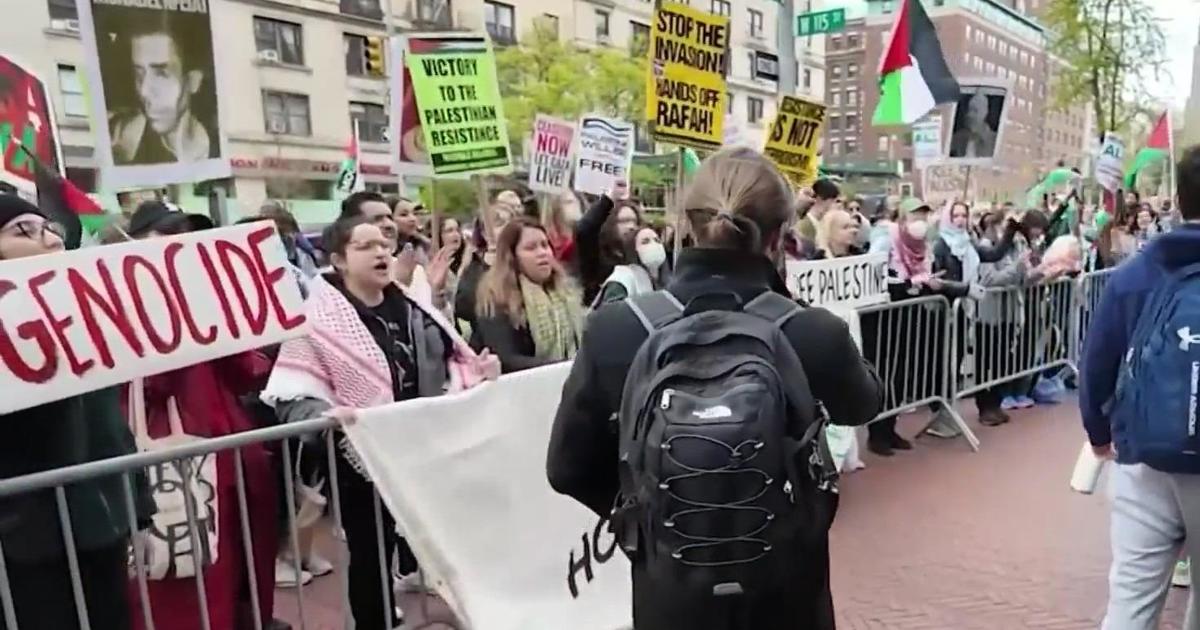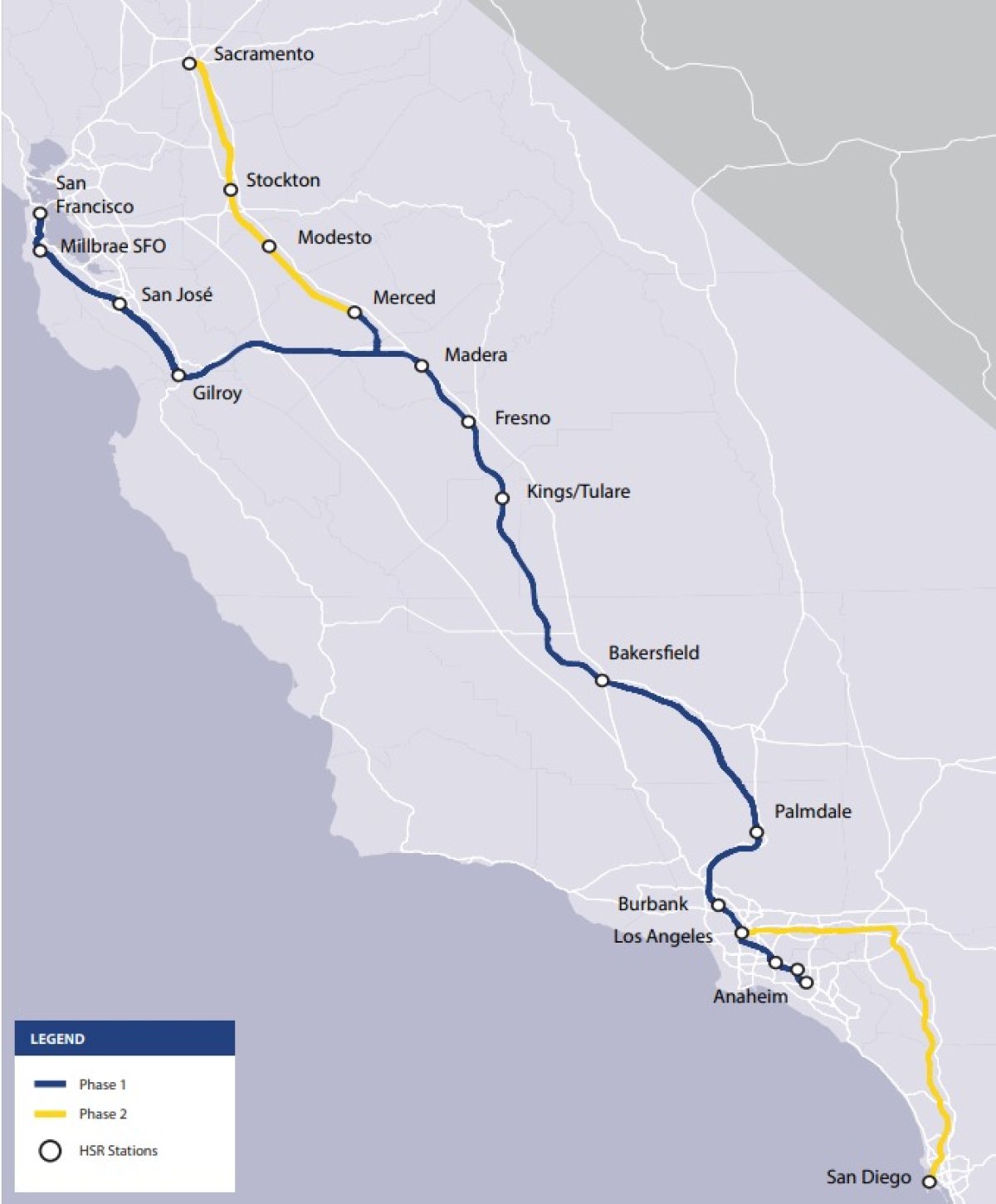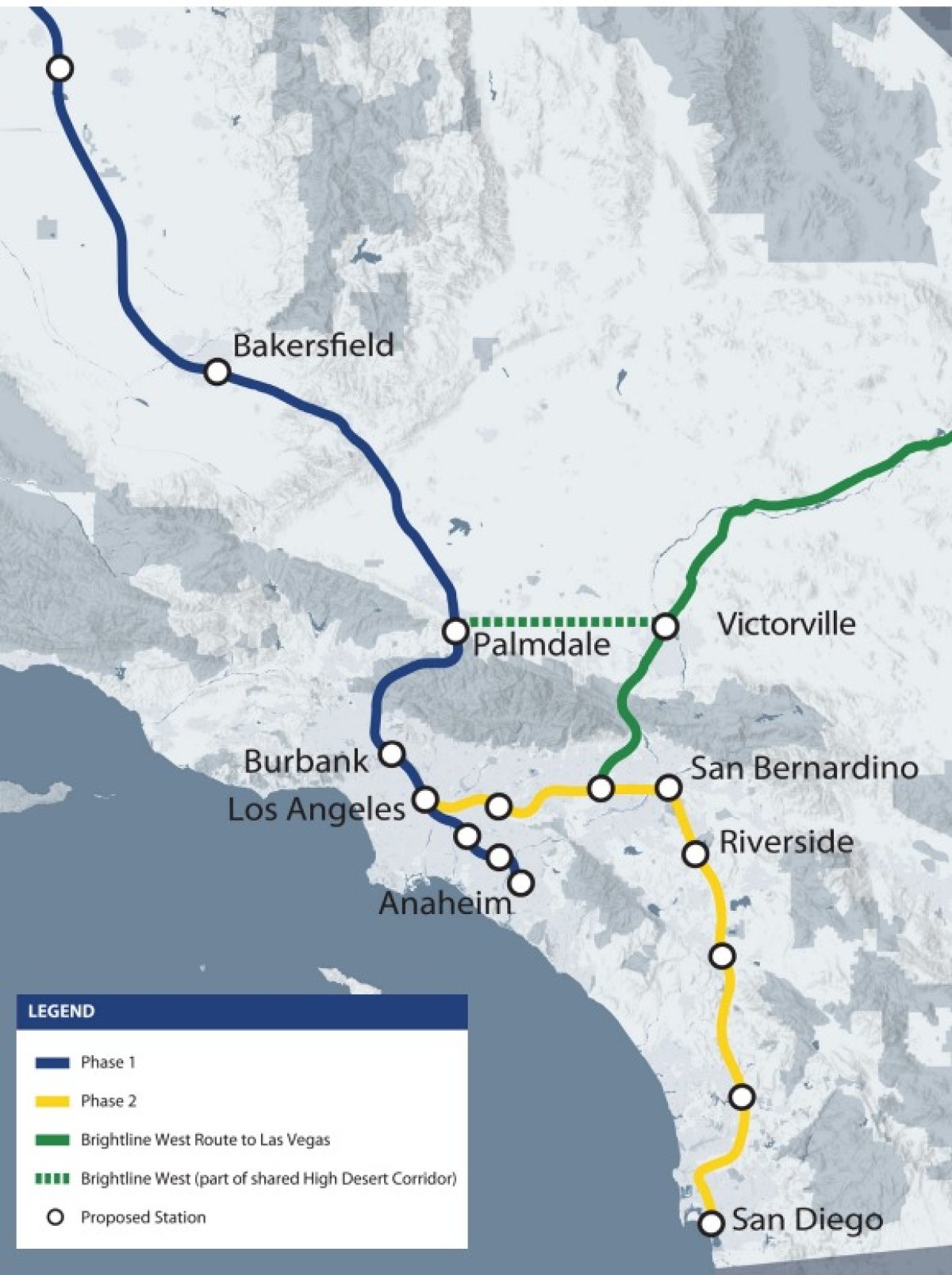Uncommon Knowledge
Newsweek is committed to challenging conventional wisdom and finding connections in the search for common ground.

California voters support efforts to reform the state’s century-old process for ballot referendums, with Republicans and Democrats in rare agreement over a proposal pushed by labor unions and good-government groups to increase transparency around campaigns to overturn state laws.
A UC Berkeley Institute of Governmental Studies poll co-sponsored by The Times found more than three-quarters of registered voters — including 7 in 10 Republicans — support changes. Those include disclosing the top three funders of a referendum campaign on each page of a petition, making signature gatherers attest under penalty of perjury that they didn’t lie to voters and suspending the licenses of those who knowingly mislead voters.
By similar margins, voters across party lines support calls to simplify ballot descriptions to make it easier to understand if a referendum upholds or reverses a law and to list the top three donors in support and opposition in the official summary of a measure.
“There’s overwhelming support to clean up what I would call a broken referendum system,” said Tia Orr, executive director of SEIU California.
Lawmakers are considering those changes and others at the state Capitol this year under Assembly Bill 421. The Assembly approved the bill Wednesday and sent it to the state Senate.
Led by Orr and the Service Employees International Union, advocates for the bill allege companies have been lying to voters about the intent of signature gathering campaigns as part of a political tactic to stall, and occasionally reverse, progressive laws passed by Democrats who control the state Legislature.
Their frustrations mounted this year after companies successfully qualified initiatives for the 2024 ballot that seek to overturn a state environmental law to create buffer zones between new oil wells and homes and schools as well as legislation backed by unions that would improve wages and working conditions for fast food workers.
In both campaigns, California voters have shared stories of being lied to and misled about the effect of their signature.
To get a measure on the ballot that would reverse a law, backers of a referendum must obtain valid signatures from 5% of the number of voters in the last gubernatorial election. Political campaigns often hire firms that pay people per signature to circulate petitions outside grocery stores and retail chains and on college campuses.
The referendum process was established in 1911 to provide Californians with a mechanism through direct democracy to counter the influence corporations held over state government. But now that Democrats make up more than two thirds of an increasingly progressive California Legislature, companies are spending millions of dollars to take advantage of the referendum process more often.
The bill to change the process would require that 5% of all signatures collected to qualify a measure be gathered by volunteers. That’s aimed at making it harder for companies to rely exclusively on paid signature gatherers, who are often from out of state, to push measures that lack grassroots support.
The poll found that 50% of voters supported changing state law to require that unpaid volunteers participate in signature collection, compared to 15% opposed and 35% who had no opinion.
Assembly Republican Leader James Gallagher (R-Yuba City) said Democrats and their union allies are trying to create barriers to using direct democracy because they don’t like the fact that their marquee measures will go before voters next year.
“I find it interesting when the direct democracy process seems to work for the other party, they’re fine with it,” Gallagher said during floor debate on the bill. “But when it doesn’t work, all of a sudden there are reforms and changes that need to be done.”
The Berkeley IGS poll was administered online in English and Spanish May 17-21 among 7,465 California registered voters. The poll sample was weighted to match census and voter registration benchmarks. Because of weighting, precise estimates of the margin of error are difficult, but the results are estimated to have a margin of error of 2.5 percentage points in either direction for the full sample.
Funding for the poll questions regarding the referendum process came from the Evelyn and Walter Haas, Jr. Fund, a private foundation based in San Francisco that aims to increase civic participation and improve the state’s democratic processes.


SACRAMENTO – As protests continue to erupt across the country, Jewish leaders in Northern California say the rate of antisemitic incidents has now broken records.
Universities across the nation have become ground zero for people protesting the Isreal Hamas war.
At Columbia, classes have moved to online learning to keep students safe, barricades have gone up around New York University, and at Yale, things have reached a boiling point.
Tensions on campuses have led to concerns about harassment and safety for the schools’ Jewish communities.
“So they started taunting me and giving me their middle finger and yelling in my face. And until one of them waved his Palestinian flag in my face and then jabbed me with it in my left eye,” said Sahar Tartek, the editor-in-chief of the Yale Free Press.
“It’s something that the Jewish community feels viscerally in a way that antisemitism hasn’t been felt in a long time,” Mark Levine said.
Levine is the director of the Anti-Defamation League Central Pacific Region. He says the number of antisemitic incidents has skyrocketed in California.
“We have the highest spike in antisemitism compared to anywhere else nationally. It soared across the U.S. by about 140%. Here in Northern California – a 202% increase,” Levine said.
Pro-Palestinian protestors clashed with police on the campus of Cal Poly Humboldt this week.
Earlier this month, a legal complaint was filed against UC Davis, alleging antisemitism in the classroom and out around campus.
When asked about recent protests, President Joe Biden denounced antisemitism but said people also need to think of the Palestinian community.
“I condemn the antisemitic protests, that’s why I’ve set up a program to deal with that. I also condemn those who don’t understand what’s going on with the Palestinians,” Biden said.
Some colleges have started to give protestors a deadline to move out. But will they remain?
“You can criticize a government but still support a country’s right to exist but I think far too many people are saying maybe Israel doesn’t have a right to exist,” Levine said.
The ADL has a heat map that tracks certain hate crimes on its website.

A series of maps show the full extent of California’s proposed high-speed rail routes that would provide an efficient and quick way of travel between the state’s major cities.
Renewed interest has surfaced in high-speed rail travel after Brightline West, a new all-electric, 218-mile rail line bringing passengers from Las Vegas, Nevada, to Rancho Cucamonga, California, broke ground on Monday after construction was delayed for several years.
The project is expected to be completed before the 2028 Olympics in Los Angeles. The California High-Speed Rail Authority has another rail line planned that would provide a trip from San Francisco to Los Angeles in less than three hours, but progress has been slow.
Brightline West
According to maps on the Rail Authority’s website, the proposed high-speed rail line would traverse three regions—northern, central and southern California.
“The Phase 1 system will connect San Francisco to the Los Angeles basin via the Central Valley in under three hours on trains capable of exceeding 200 miles per hour,” the website said. “Phase 2 will extend to Sacramento and San Diego.”
A spokesperson for the Authority told Newsweek that the project is at an “exciting time.” There are 171 miles of rail line under construction, and there is environmental clearance for 422 miles.
“In the last year alone, the Authority has been awarded $3.3 billion in new federal funds to advance the work on the initial operating segment between Merced and Bakersfield, signifying a renewed federal partnership,” the statement said.

California High Speed Rail Authority
There are two legs to the northern California project. Phase 1 involves creating a high-speed rail line from San Francisco to Merced, with stops in between at Millbrae-SFO, San Jose and Gilroy. Phase 2 would bring travelers from Sacramento to Merced with stops at Stockton and Modesto.
For the San Francisco to San José leg of the journey, the Authority plans to introduce high-speed rail service to the Caltrain corridor. Environmental clearance was completed in 2022, and construction of the Caltrain electrification is under way.
Environmental clearance also was completed for the San José to Merced leg.
“Electrifying the existing rail corridor from San José to Gilroy will modernize the rail corridor for electrified high-speed rail service and allow Caltrain to extend electrified service to southern Santa Clara County,” the website said.

California High Speed Rail Authority
The middle stint of the statewide project travels from Merced to Bakersfield with rail stations at Fresno and Kings/Tulare. Construction is most promising in this segment.
“The electrified high-speed rail line between Merced and Bakersfield is the first building block of the statewide system. This 171-mile line will offer the nation’s first true electrified high-speed rail service,” the Authority said on its website.
The spokesperson told Newsweek that this leg of the project is expected to be completed by 2030 to 2033.

California High Speed Rail Authority
The southern California stint also involves two phases. Phase 1 would bring travelers from Bakersfield to Anaheim with stops in Palmdale, Burbank and Los Angeles. Phase 2 would travel from Los Angeles to San Diego with stops at San Bernardino and Riverside. The southern California map also shows the Brightline West route.

California High Speed Rail Authority
The statewide project has been plagued with delays and price jumps. Voters approved the project in 2008, KTLA reported, with Phase 1 taking travelers from San Francisco to Los Angeles. At the time, the project was anticipated to be operational by 2020 and cost $33 billion.
Four years past the deadline, the project is still far from being completed and the price has jumped to $128 billion.
“The full Los Angeles to San Francisco line completion date is contingent on federal funding,” the spokesperson told Newsweek.
According to a U.S. House testimony by Lee Ohanian, a UCLA professor and Stanford University fellow, California began its journey to high-speed rail in 1993 by creating the California Intercity High-Speed Rail Commission. Three years later, the commission was replaced by the California High-Speed Rail Authority.
“California’s HSR project has little to show over this 30-year period. The project is significantly delayed, and its budget has increased to about four times its initial cost. Some of this is due to mistakes in planning, management, oversight, and accountability,” Ohanian testified.
“But other factors reflect more endemic challenges in building HSR, including limitations in understanding the scope and size of the problems and risks that can arise in such a major infrastructure project.”
Newsweek is committed to challenging conventional wisdom and finding connections in the search for common ground.
Newsweek is committed to challenging conventional wisdom and finding connections in the search for common ground.

A map shows which counties in California have the highest percentage of high school dropouts.
To determine which counties had the highest percentage of dropouts, Newsweek analyzed the latest data from the U.S. Census Bureau which tracked the number of residents 25 and over with at least a high school diploma.
The analysis found that Monterey County had the highest percentage of high school dropouts, at 27.3 percent.
That was followed by Colusa County with 26.7 percent, Madera County with 26.4 percent and Merced County with 25.7 percent. Imperial County has 25.5 percent.
The counties with the highest number of high school graduates were all in northern California. Placer County had the lowest dropout rate, with just 4.4 percent. Other counties—including Trinity, Nevada, Shasta and Plumas—all had fewer than 6 percent.
Newsweek previously reported that California, the nation’s most populous state, ranks at the very bottom of U.S. states when it comes to the number of high school diploma holders. Just 84.7 percent of California residents aged 25 or over have graduated from high school, according to 2022 Census data.
However, the latest data from the California Department of Education has shown that students are graduating from high school at higher levels than before the COVID-19 pandemic.
The graduation rate for the class of 2023 was 86.2 percent—down about a percentage point from the previous year, but still higher than pre-pandemic levels.
The data was “encouraging,” State Superintendent of Public Instruction Tony Thurmond said in December, but “our work is not complete.”
“We have made an unprecedented investment in services that address the needs of the whole child,” Thurmond said. “We can see that those efforts are paying off, but this is only the beginning. We need to continue providing students with the tools they need to excel, especially now that we are successfully reengaging our students and families, so we can close gaps in achievement in the same way that we have begun to close the equity gaps in attendance and absenteeism.”
Students across the country have been absent at record rates since schools reopened during the COVID-19 pandemic, adding further challenges as schools work to help students recover from huge learning setbacks.
Those who end up dropping out of high school could face adverse consequences well into adulthood, according to Jennifer Lansford, a research professor of public policy at the Sanford School of Public Policy at Duke University.
“The long-term consequences of dropping out of high school can be very negative for individuals who drop out, their families, and society as a whole,” Lansford told Newsweek.
She pointed to research that she and colleagues carried out using data from children that were followed from the age of 5 until 27.
That research found that individuals who dropped out of high school were nearly four times more likely to be receiving government assistance, were twice as likely to have been fired two or more times, and were more than three times more likely to have been arrested since the age of 18.
Newsweek is committed to challenging conventional wisdom and finding connections in the search for common ground.
Newsweek is committed to challenging conventional wisdom and finding connections in the search for common ground.


If not Ursula, then who? Seven in the wings for Commission top job


Film Review: Season of Terror (1969) by Koji Wakamatsu


Nine questions about the Trump trial, answered


Hungary won't rule out using veto during EU Council presidency


Croatians vote in election pitting the PM against the country’s president


GOP senators demand full trial in Mayorkas impeachment


Trump trial: Jury selection to resume in New York City for 3rd day in former president's trial


The Take: How Iran’s attack on Israel unfolded